

We had one free day between Liz's work conference ending and then having to return back home to the United States the following day. Since we were already situated in Bristol, we decided that we would make the short drive across the River Severn into Wales and spend a morning in the capital city of Cardiff. This is the largest city in Wales and both of us had visited it previously on separate trips with our families. It took about 90 minutes to travel from downtown Bristol into the central part of Cardiff, as we had to check out of our hotel and then we took a somewhat roundabout route that involved crossing over the Clifton Suspension Bridge. We started seeing road signs printed in the Welsh language as soon as we crossed into Wales and that continued throughout this brief stopover. Cardiff would be a great city to spend some time exploring but we only had a few hours available and had to limit ourselves to some of the major attractions.

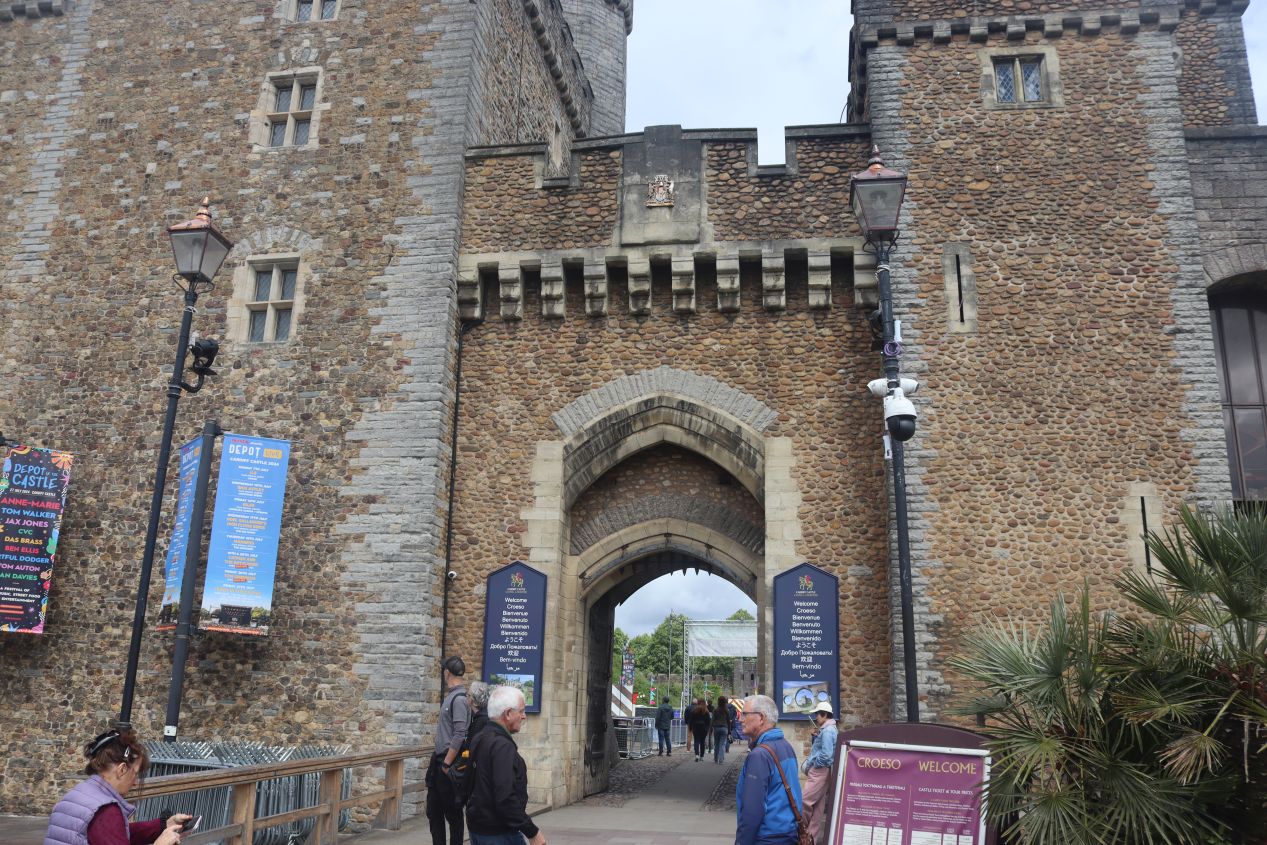


The most famous tourist destination in Cardiff is most likely Cardiff Castle, certainly the oldest surviving structure that the modern city grew up around. This spot has been fortified for nearly two millennia starting with the Romans who arrived in the middle of the first century AD. The remanants of those Roman fortifications could still be seen at the base of the medieval wall pictured above, the lighter-colored stones down at the base of the structure. Like many other historical sites, Cardiff Castle was built up over the course of long centuries and the buildings that can be seen today date from a variety of different eras. We were entering through the main southern gate which dates from the 15th century and is known as the Black Tower. The fortifications ran off to the west where the Clock Tower and its astronomical statues were located... along with a truly massive row of portable toilets, heh. Cardiff Castle was hosting some outdoor concerts during the summer and those facilities were apparently needed for the concert-goers. That certainly wasn't something we expected to see at a medieval castle!

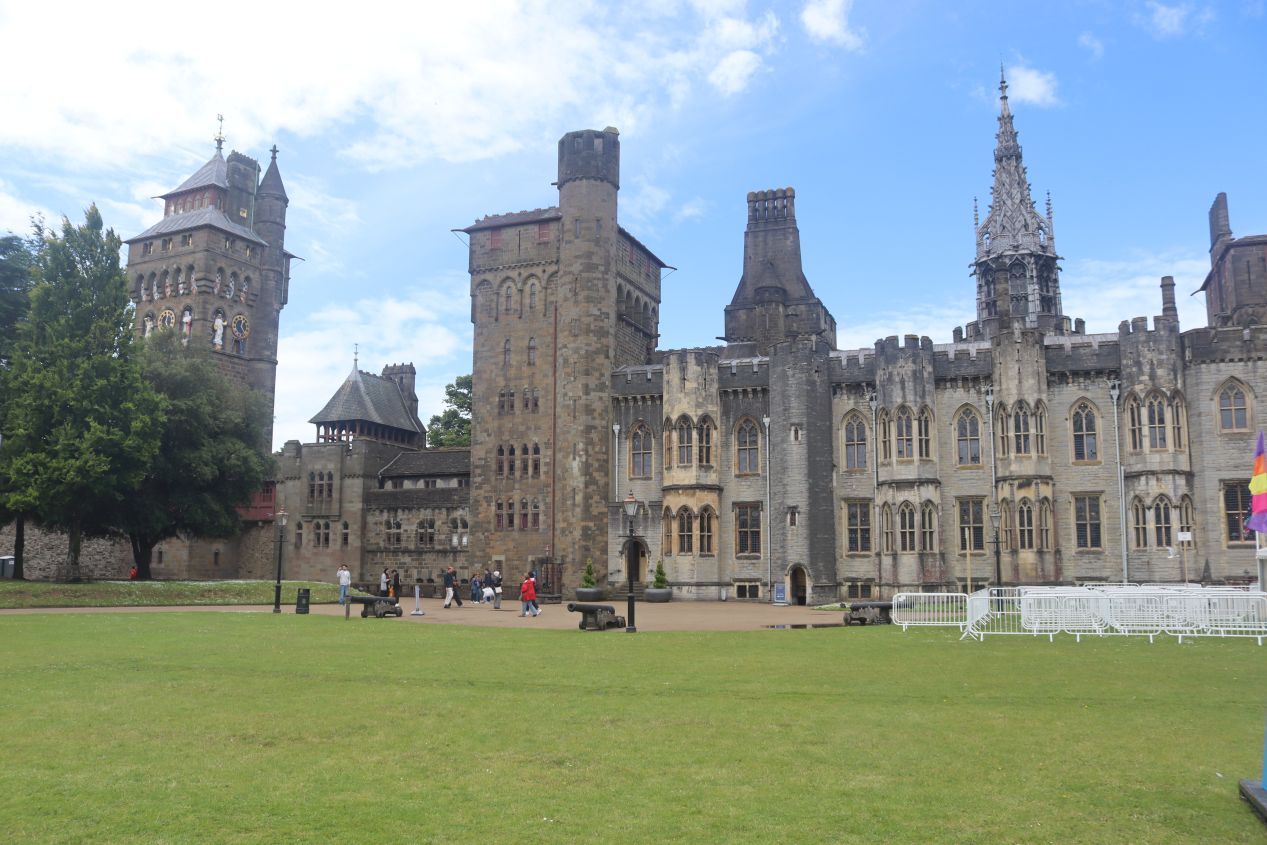


The first part of the castle grounds that we decided to visit was located off in that western direction, this manor house which was definitely not built in the medieval era. It was instead a manor house constructed by the Marquesses of Bute, the last owners of Cardiff Castle before it was taken over by the city government, who had this large structure built starting in the late 18th century and then continuing throughout much of the 19th century. The Gothic Revivalism style was very popular in the 1860s and 1870s (which was when much of the current Parliament building at Westminster was also built) and the Bute family used the same architectural theme here, making their manor house resemble a cathedral. We headed inside for an unguided walking tour of the manor house which took us to this colorful chamber known as the Arab Room. The design was intended to pull inspiration from Moorish Spain and it certainly stood out from the rest of the building.

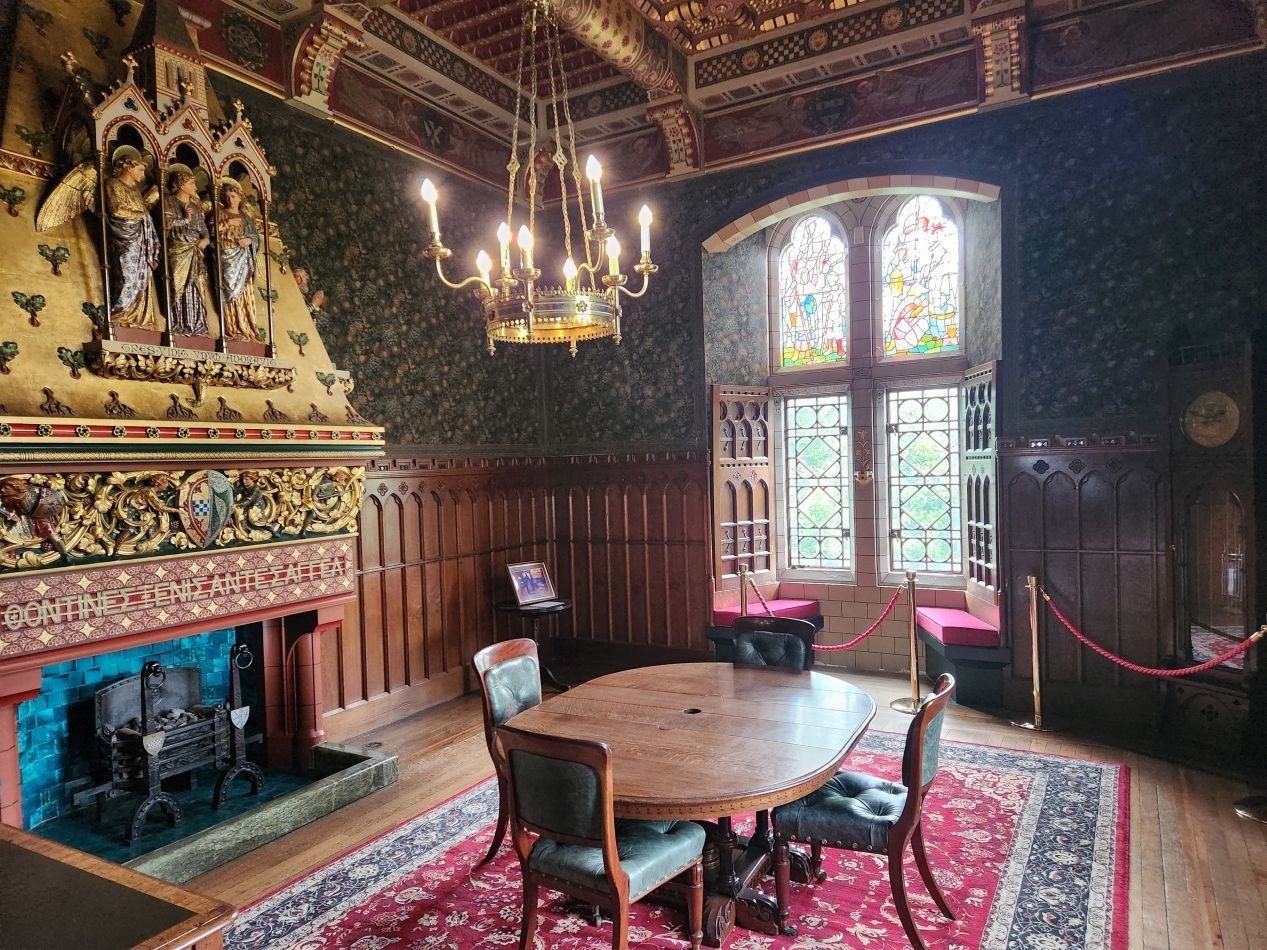


These were more of the featured rooms from inside the manor house, specifically the banqueting hall that looked like it could have accomodated a hundred guests without much trouble. The Bute nobles must have had tremendous money available for decorating these rooms as there was an extraordinary attention to detail in the painted walls and ceilings. Every surface seemed to have some kind of colorful depiction of past events, with all of the text written in Latin for the proper amount of hauteur. Apparently these paintings were intended to capture what Cardiff Castle looked like in the early 12th century, or at least what it looked like as imagined by Victorian-era artists. These decorations are considered to be some of the finest examples of Gothic Revival artwork in existence even if they were a bit over the top in terms of presentation.

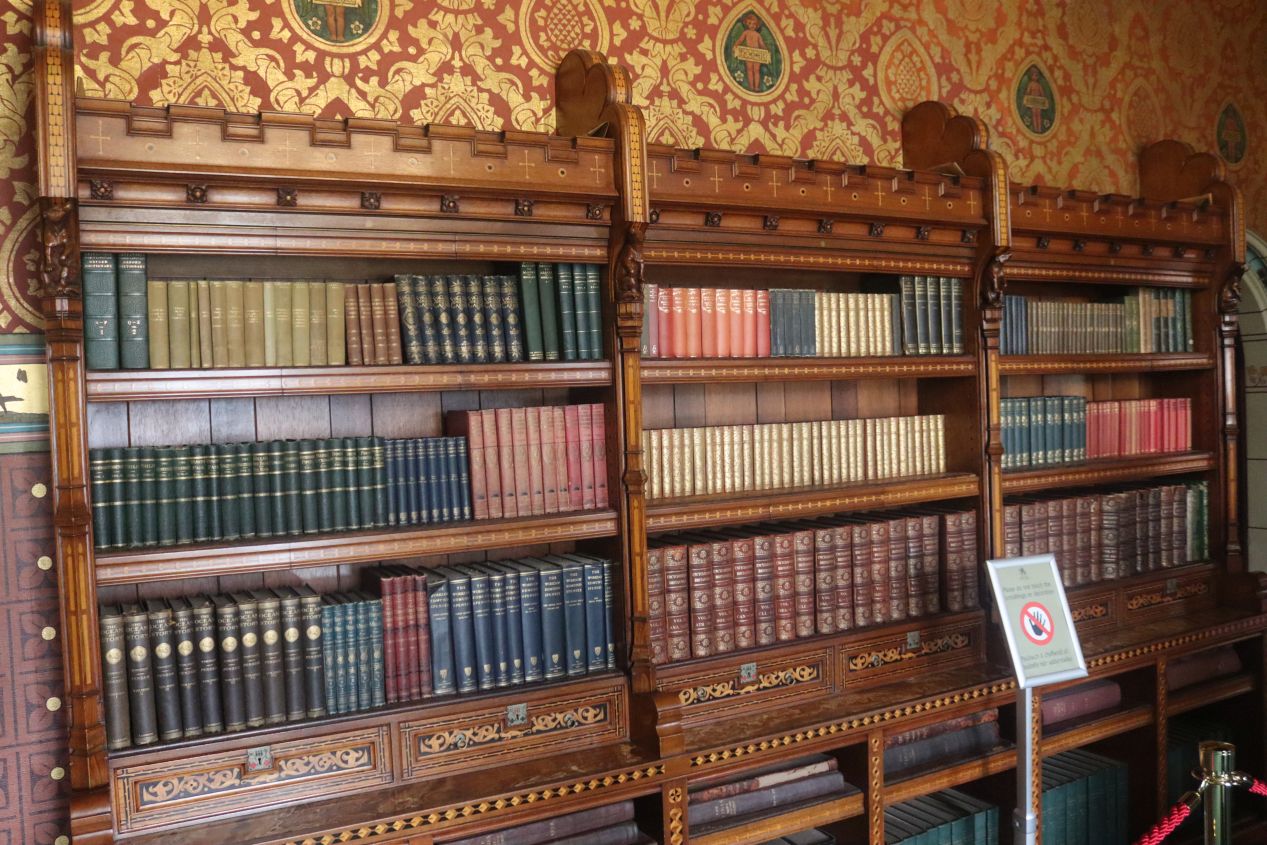


The floor directly below the banqueting hall held this similarly-shaped long passageway which functioned as the library for the manor house. The Bute family evidently had a massive personal collection of books and needed to build this huge library to store them. It looked like a very cozy room to read a book by the fireplace on a winter's day and I found myself liking the prior owners of Cardiff Castle a bit more after seeing this place. The Bute family held the castle until 1947 when the Fifth Marquess of Bute sold the property to the city of Cardiff so that it could be converted into a museum and a tourist attraction. This is now one of the most popular places to visit in the city, and yes, it looks pretty strange to have a nearly-intact medieval castle complete with thick stone walls sitting across the street from a Burger King and a Subway!

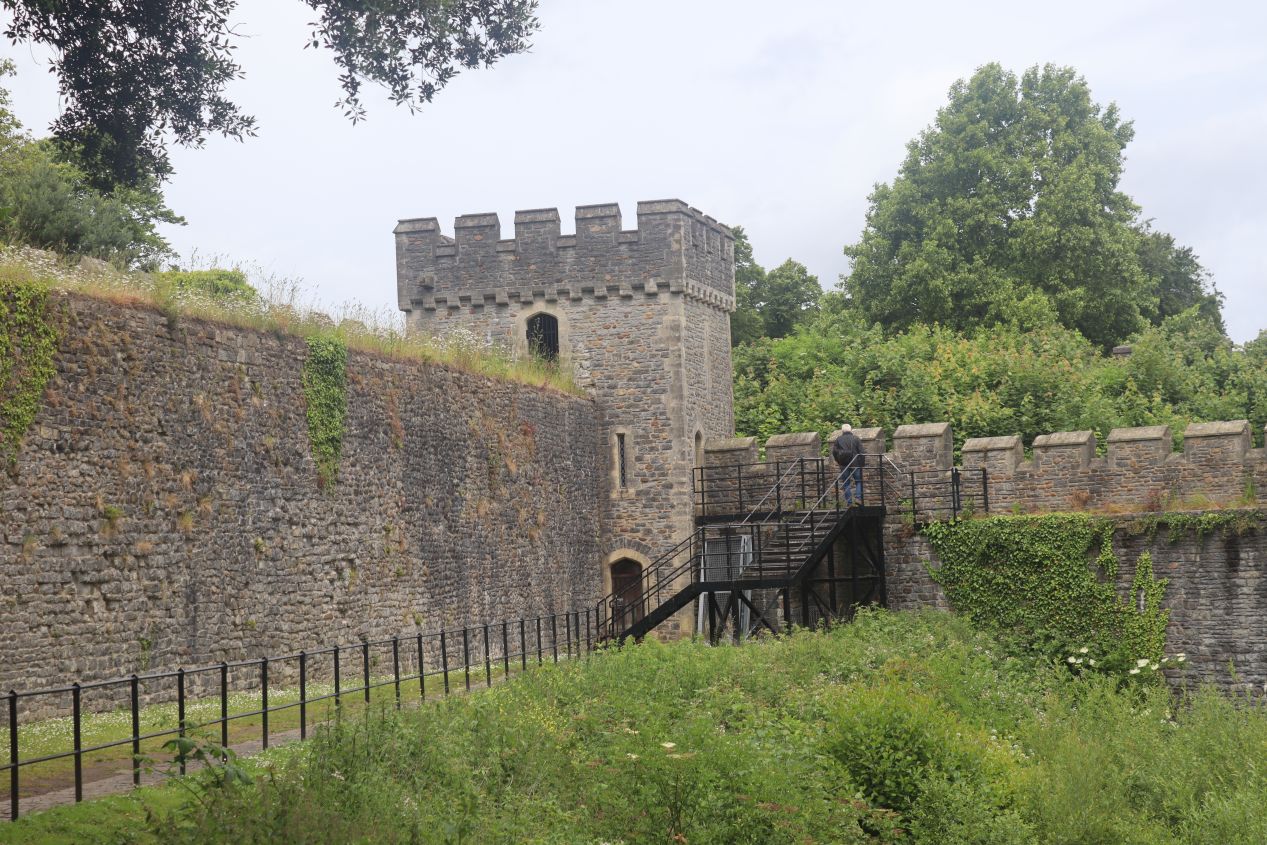


Once we were finished with our tour of the manor house, we went for a walk around the outskirts of the castle grounds, following the wall in a clockwise loop back towards the main entrance. We were circling around the central keep which had been built by the Normans and which we'd be exploring in closer detail next. There was a path that went completely around the medieval walls, first following alongside them and then eventually going inside the walls themselves where there was a long and narrow corridor made from stone bricks. There was no one else in the passageway at this moment and it was a bit spooky following its course even with the presence of modern electrical lights. We could also see the eastern part of the castle grounds from here where a stage had been constructed for the concert series mentioned earlier. A number of big name artists have played here over the years including Tom Jones and Green Day in what has to have been one of the weirdest places to host a rock concert.


This was the view from atop the wall on the eastern side of the castle. Did you think I was exaggerating when I said there was a Burger King literally across the street? 

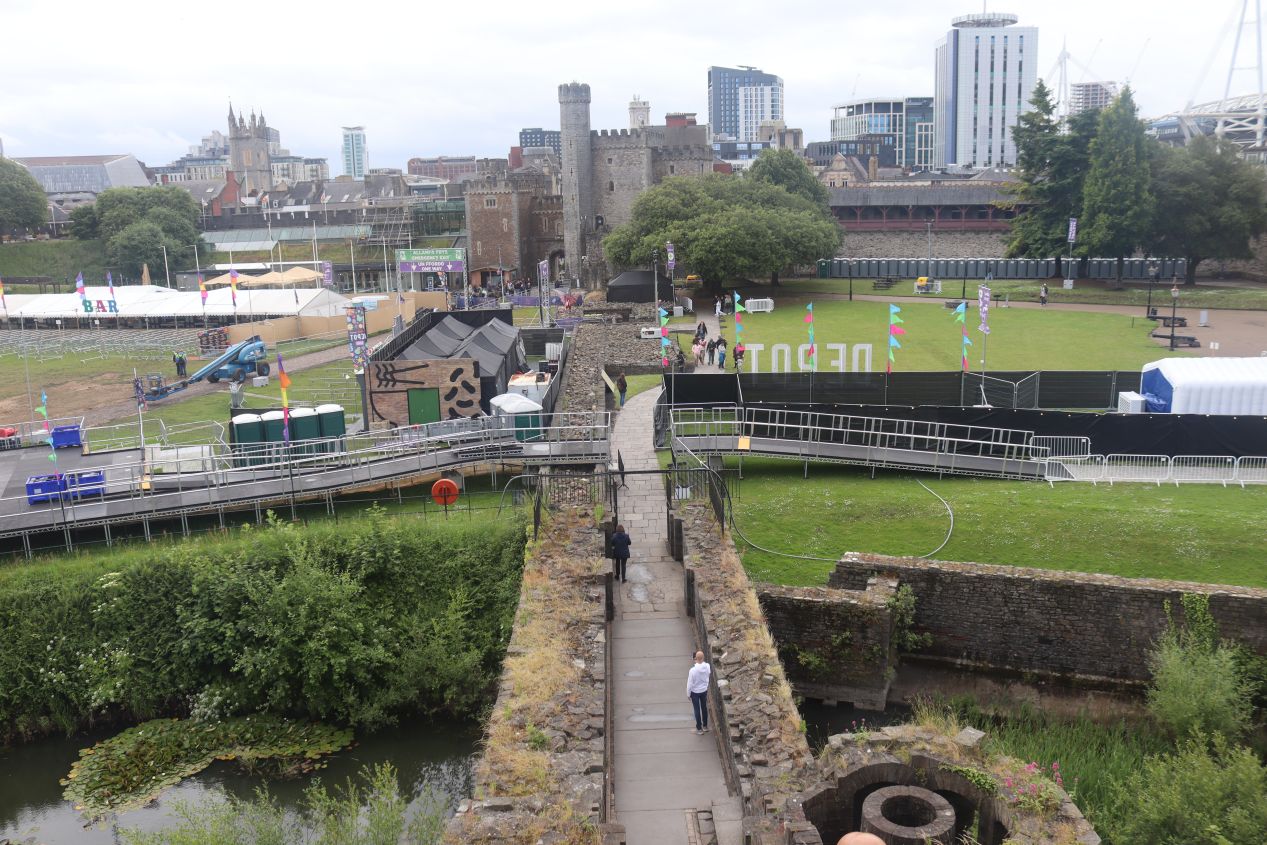


The one remaining part of the castle to visit was the Norman keep located at its center. This was the first part of the castle grounds to be constructed (not including the ancient Roman fort), built in either 1081 or 1091 as part of the need for the Normans to establish control over the Welsh border. This original part of Cardiff Castle was a classic motte-and-bailey design, with a defensive outer trench encircling a 40 foot / 12 meter high mound of earth with a small stone keep at its summit. The keep was designed to be a place where Anglo-Norman forces could retreat if attacked by the Welsh, which is something that most definitely did happen numerous times over the next three centuries. There are a number of historical anecdotes associated with this part of Cardiff Castle but my favorite is this one: this keep was where King Henry I of England held Robert Curthose, his oldest brother and the former Duke of Normandy, from 1126 until his death in 1134. Both of these sons of William the Conqueror had clashed over control of the English throne and Henry won the struggle, thereafter holding Duke Robert in various places of captivity for three decades until his death of natural causes. I suppose there were much worse fates for the loser in a royal struggle than being kept in a fortified keep.




It took a steep climb up a set of stairs to reach the main part of the keep which held an enclosed area open to the sky. From there, a modern wooden staircase headed further up into the remnants of the old Norman tower where an even smaller stone staircase spiraled further upwards to the rooftop. There was a small platform here which granted sweeping views looking out over the rest of the castle grounds and on into the city of Cardiff beyond. The football stadium currently known as Principality Stadium was situated a little ways beyond the manor house and I could see the grounds of the University of Wales off in the opposite direction beyond the northern walls. There were so many layers of history here at Cardiff Castle that it was a fascinating place to experience for a history Ph.D like myself: everything from the Romans to the Normans to Welsh rebels to local battles that took place during the Wars of the Roses and the Wars of the Three Kingdoms to the fanciful architecture of Victorian nobles with too much money on their hands left their mark here. We would highly recommend visiting the castle for a few hours for anyone traveling to Cardiff.


It was right around noon at this point and we headed off to get some lunch after leaving the castle grounds. We ended up walking down nearby Queen Street which has been turned into a pedestrian thoroughfare right in the middle of Cardiff's busy downtown. This street was heavy on shopping along with plenty of restaurants and pubs for the hungry traveler. We ended up eating at a little hole-in-the-wall Chinese place that had some tasty noodle bowls, which didn't exactly fit the Welsh theme of the day but still made for a good meal. I think if we'd had more time we would have gone over to the nearby Cardiff Market which is a historical marketplace dating to the Victorian era with plenty of food on sale.

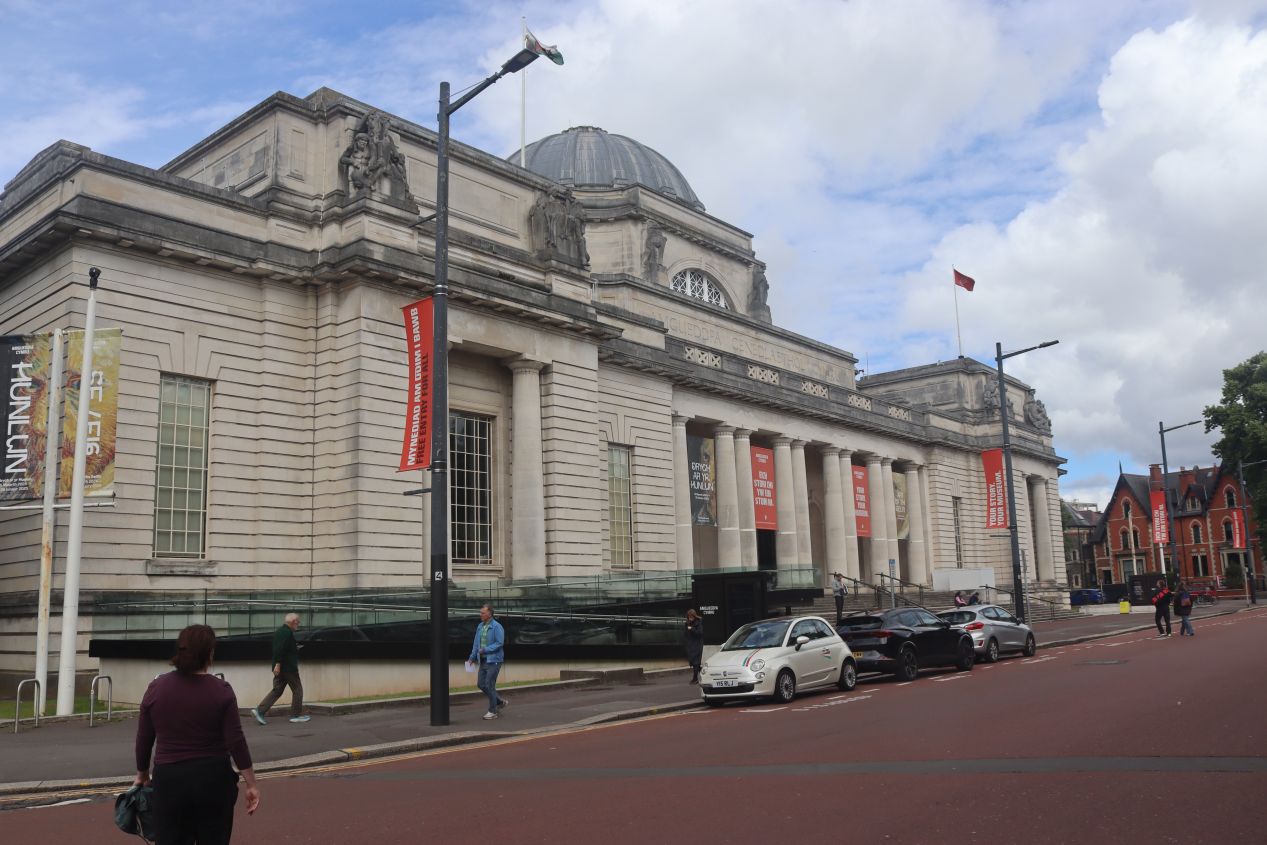


We didn't have much more time available to spend in Cardiff and opted to walk a few blocks to the north where Cardiff City Hall and the National Museum Cardiff were located. While we didn't go inside the city hall building, we did get a good look at its Edwardian Baroque design as we approached the next-door museum. The National Museum Cardiff (formerly known as the National Museum of Wales) was free to enter and held a vast collection associated with art and natural history. This building officially opened in 1927 and has been hosting artifacts associated with Wales for nearly a century at this time of writing. I hadn't done too much research on what was held at this museum, only knowing that it was one of the top-rated attractions in the city in all of the tourist materials.

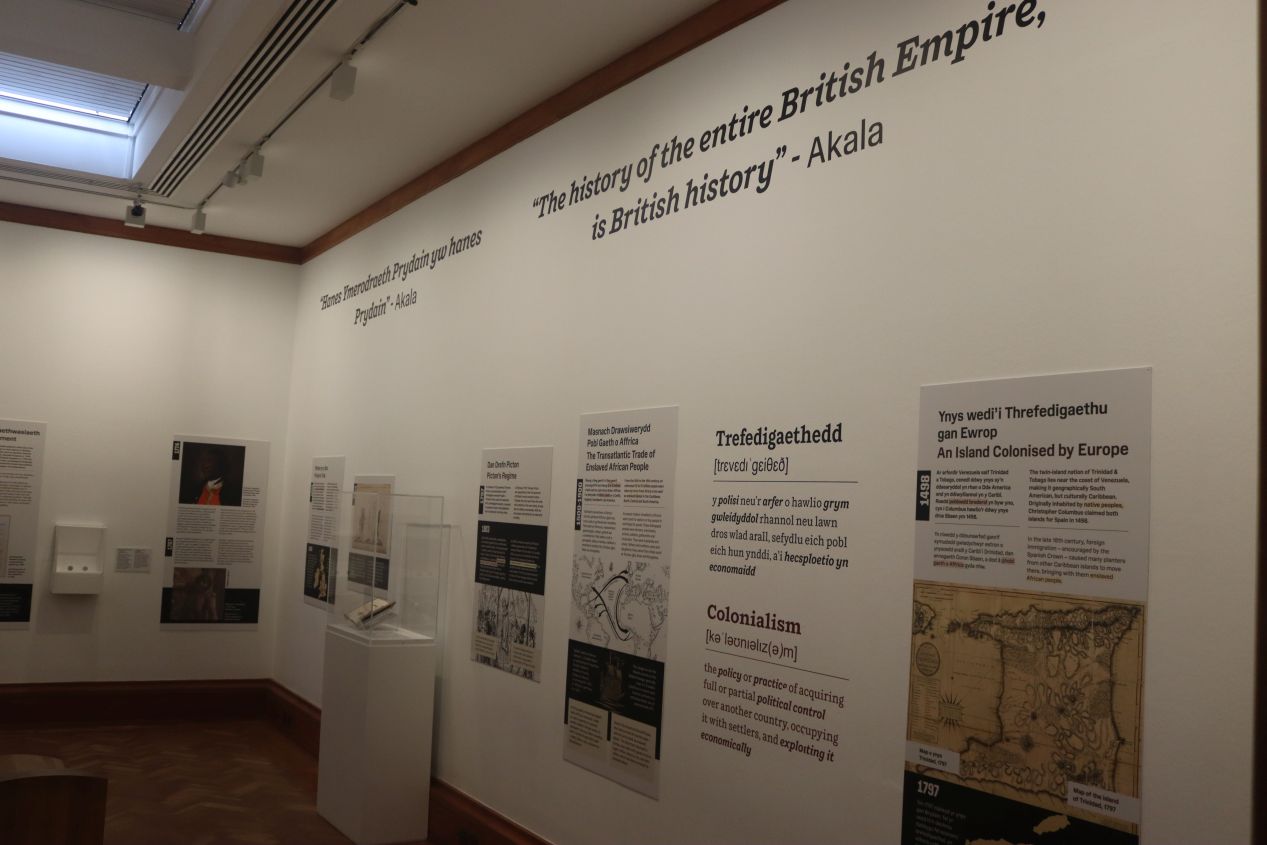


Most of the National Museum Cardiff turned out to be an art museum, which occupied the upper floors of the building. This wasn't exactly what I had been expecting, as I thought that the building would be more of a history museum, only to find that it was largely devoted to showcasing art instead. The collections were mostly focused on different types of European paintings from the Renaissance to the present, especially a lot of artwork from French artists. There was a section dedicated to Welsh artists but it didn't make up as much of the museum as I had been expecting. I don't want to be too negative in this summary as the National Museum Cardiff looked to be an excellent art museum, it simply wasn't what we had been planning to see. We didn't spend too long before heading down to the lower floor of the museum which was associated with a completely different kind of exhibit:




Dinosaurs! Well natural history, to be more precise, but there definitely were the remains of dinosaurs and other ancient animals on display here. Wales has historically been a rich location for fossil discoveries, thanks to the combination of a heavy mining industry together with rock deposits from a number of different geologic periods. The whole bottom floor of the museum walked visitors through the natural history of what has now become Wales along with some of the wild creatures that lived here millions of years ago. This was also perfectly well done but we didn't have the time available to do more than take a brief stroll though the exhibits. We had both been hoping to find a museum focused on the history of Wales and this simply wasn't it; the Museum of Cardiff to the south of Queen Street probably would have been a better choice for what we were hoping to see.
That was all that we had time to experience in Cardiff on this brief excursion to the city. I'd been hoping to drive down to the harborfront area where the Senedd (the Welsh Parliament) is located along with a number of other attractions but we simply didn't have the time. We needed to drive back into England again and make our way to the town of Newbury before all of its stores shut down for the day, something that we barely managed to do with this early afternoon departure from Cardiff. We'd like to come back to Cardiff again on another trip and spend more than a few hours here in the Welsh capital, hopefully when we aren't quite so pressed for time. Until then, we very much enjoyed the limited attractions that we had managed to see on this visit.



